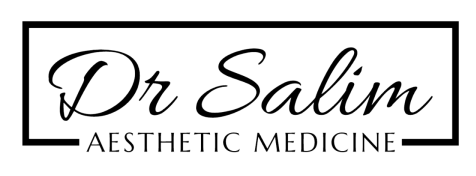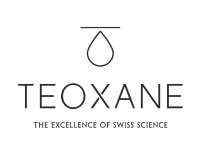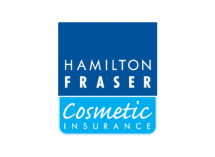Enhancing Precision & Safety: The Role of Ultrasound Imaging in Aesthetic Medicine
June 8, 2023
Ultrasound imaging is revolutionising aesthetic treatments by providing a detailed view of facial structures, allowing for safer, more precise procedures. Discover how this advanced technology minimises risks and enhances treatment accuracy for optimal, natural results.
In recent years, technological advancements have revolutionized the field of aesthetic medicine, improving both precision and safety in various procedures. One such innovation that has gained significant momentum is the use of ultrasound imaging. Originally used primarily in diagnostic medicine, ultrasound has now found its way into aesthetic practices, providing practitioners with invaluable real-time imaging capabilities. In this blog post, we will explore the benefits and applications of ultrasound imaging in aesthetic medicine, highlighting its role in enhancing patient outcomes and safety.
- Accurate Assessment and Treatment Planning: Ultrasound imaging offers a non-invasive and real-time visualization of anatomical structures beneath the skin surface. This capability enables practitioners to accurately assess the patient’s unique anatomy, identify potential contraindications, and develop tailored treatment plans. Whether it’s determining the depth and location of facial vessels or assessing tissue thickness and elasticity, ultrasound provides valuable insights that can guide precise treatment decisions.
- Precise Injection Guidance: One of the key advantages of ultrasound imaging in aesthetic medicine is its ability to guide the precise placement of injectables such as dermal fillers and neuromodulators. By visualizing the target area in real-time, practitioners can navigate complex anatomical structures, avoid vital vessels and nerves, and ensure optimal product placement. This level of precision minimizes the risk of complications and enhances the overall aesthetic outcome of the procedure.
- Safety Enhancement: Patient safety is of utmost importance in aesthetic medicine, and ultrasound imaging plays a crucial role in ensuring safe treatment. By visualizing vital structures, practitioners can avoid inadvertent injections into sensitive areas, reducing the risk of complications such as vascular occlusion or nerve damage. Ultrasound can also aid in the early detection of potential complications, allowing for timely intervention and mitigating adverse outcomes.
- Expanded Treatment Possibilities: The versatility of ultrasound imaging extends beyond injectables. It can be utilized in various aesthetic procedures, such as guiding energy-based treatments like focused ultrasound or radiofrequency. Ultrasound enables precise energy delivery, ensuring optimal results while minimizing collateral damage to surrounding tissues. Additionally, it can aid in the assessment and planning of liposuction procedures, optimizing patient selection, and minimizing risks.
- Patient Engagement and Education: Ultrasound imaging is not only beneficial to practitioners but also to patients. By visualizing their anatomy and treatment progress, patients gain a better understanding of their individual characteristics and the anticipated outcomes. This visual representation fosters informed consent and empowers patients to actively participate in their treatment decisions.
The integration of ultrasound imaging into aesthetic medicine has brought significant advancements in precision, safety, and patient outcomes. Its ability to provide real-time visualization and guidance during procedures allows practitioners to navigate complex anatomy, minimize risks, and optimize treatment outcomes. With its expanding applications, ultrasound imaging is poised to play an increasingly vital role in the future of aesthetic medicine, raising the bar for both practitioners and patients alike.
References:
- de Boulle, K., & Heydenrych, I. (2018). Patient factors influencing dermal filler complications: Prevention, assessment, and treatment. Clinical, Cosmetic and Investigational Dermatology, 11, 393-402.
- Narins, R. S., & Beer, K. (2006). Liquid injectable silicone: A review of its history, immunology, technical considerations, complications, and potential. Plastic and Reconstructive Surgery, 118(3 Suppl), 77S-84S.
- Sakamoto, F. H., et al. (2015). Ultrasound imaging for cosmetic procedures: Current perspectives. Clinical, Cosmetic and Investigational Dermatology, 8, 479-489.
- Toh, P. R., et al.
Kind Words
From Our Clients

“Extremely happy with the service and procedure from Dr Salim. He was professional, patient and informative and I am very happy with the result and exceptional follow up service. Highly recommended.”

“Dr Salim is very professional and knowledgable. He listens and is sensitive to your problems. I would highly recommend Dr Salim for treatment. The clinical room in which I have meet with Dr Salim is private and clean. I highly recommend Dr Salim.”

“I had an initial assessment with Dr Salim. He was very professional and explained everything that would happen very clearly which helped to put me at ease. I had the opportunity to ask questions and did not feel pressurised. I would definitely recommend Dr Salim to anyone. A top service!”

“My experience with Dr.Salim was outstanding. Professional place where you can trust and know you are going to be well looked after. Dr. Salim is very skilled and knowledgeable .I have been a returned client as I find his procedures very effective. Couldn’t recommend more.”

“I had my Botox with the lovely Dr Salim who is both professional and reassuring and very informative. I was extremely happy with the results and this is where I will coming for any further treatments. I found the Botox used suited my face extremely well and felt a fresher look was definitely achieved soft but natural . Thank you Dr Salim”

“Amazing experience! I recently had botox treatment, and Dr Salim’s skillful approach and genuine care made me feel at ease from start to finish. He took time to listen to all my concerns, ensuring a personalised and effective treatment. I’m very happy with the results and would highly recommend him.”
Accreditations & Affiliations
Get In Touch
With Us Today









